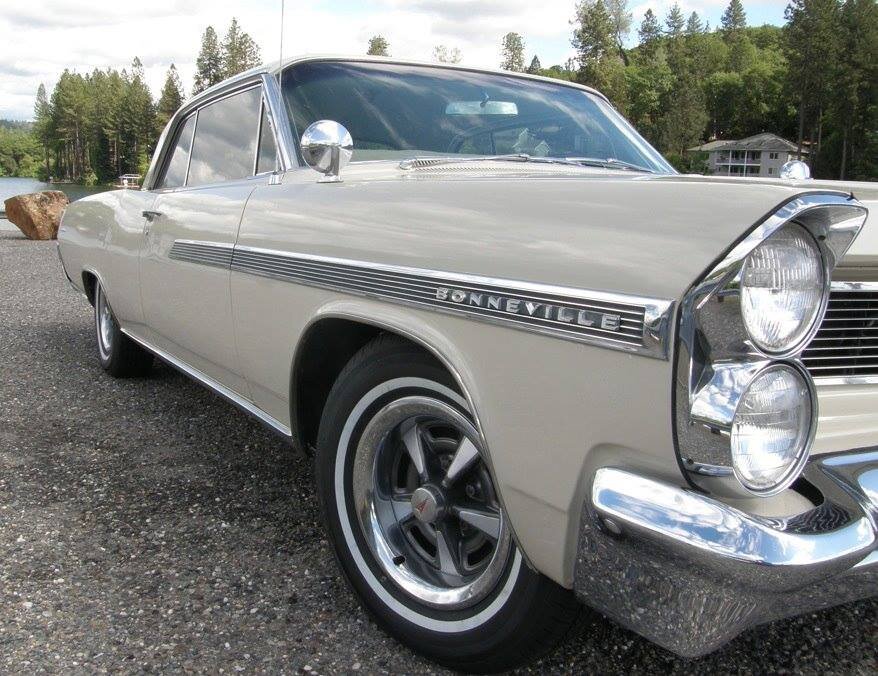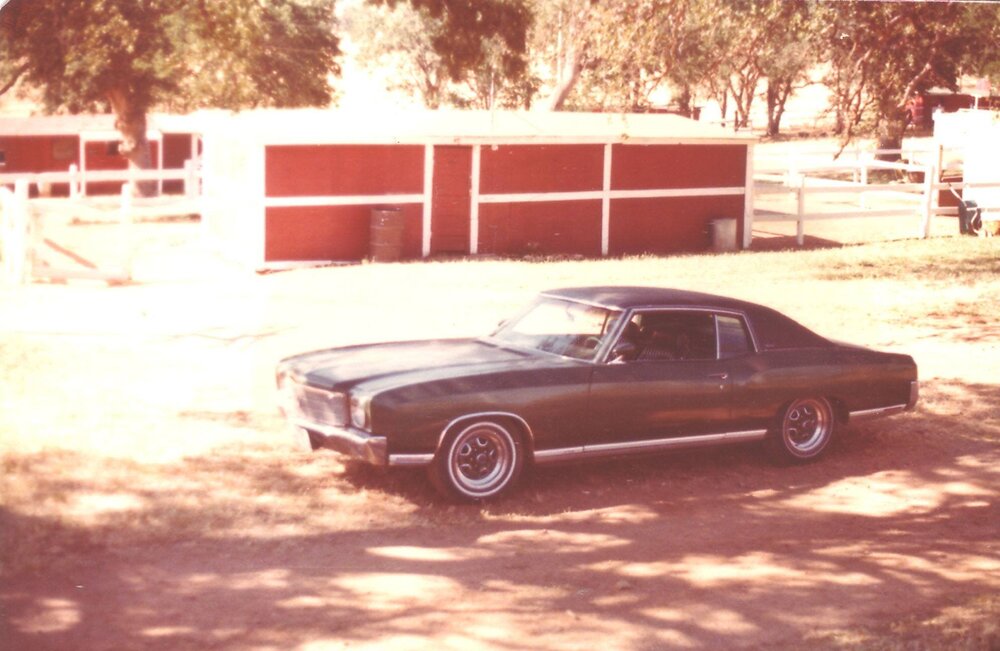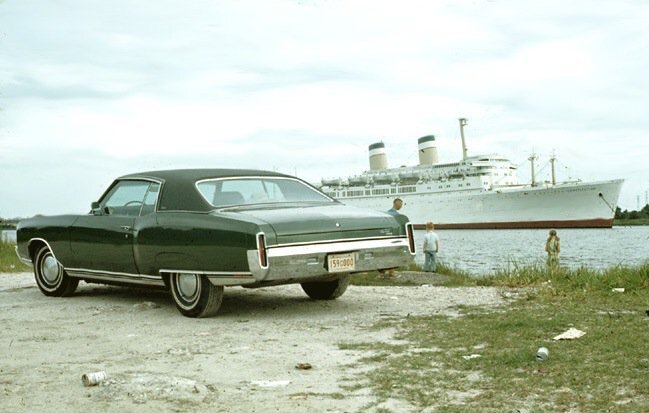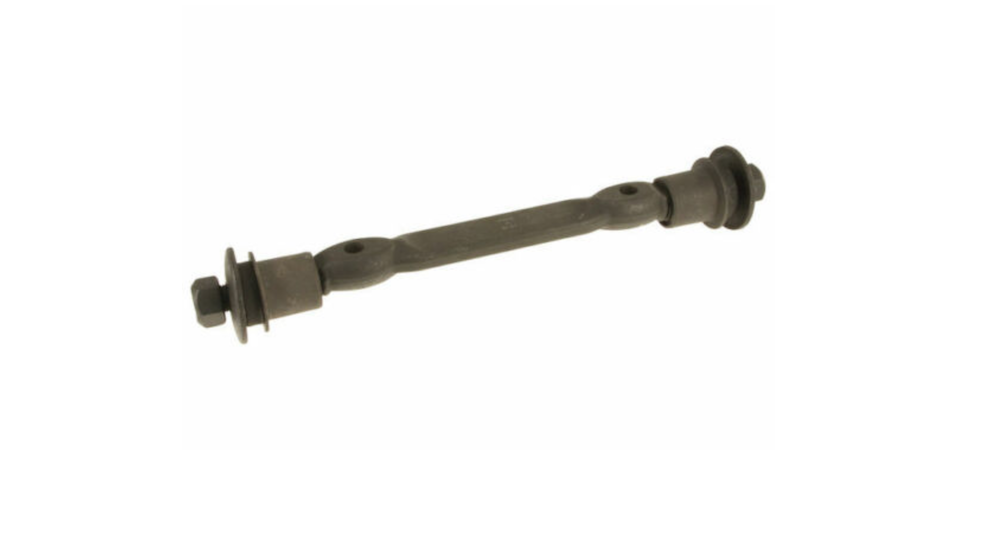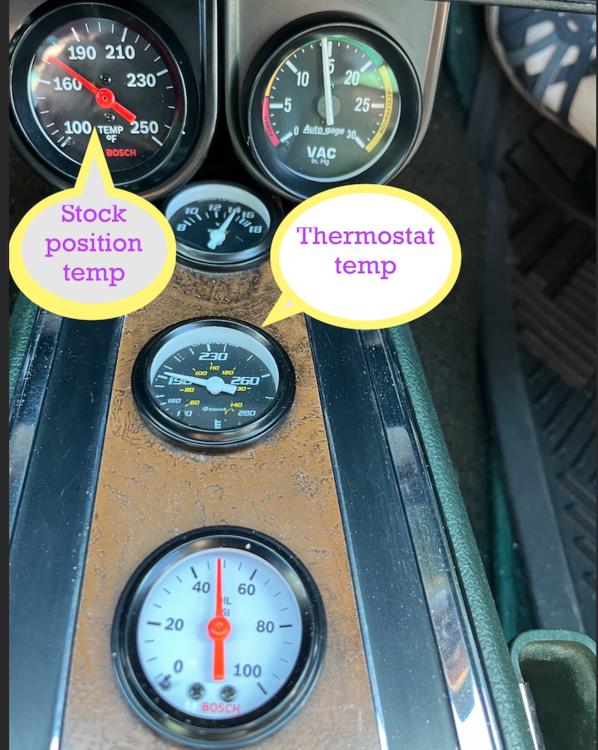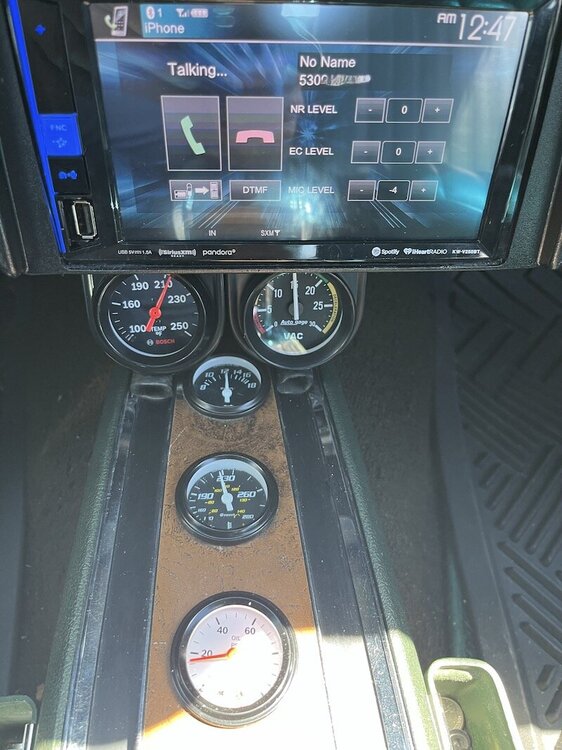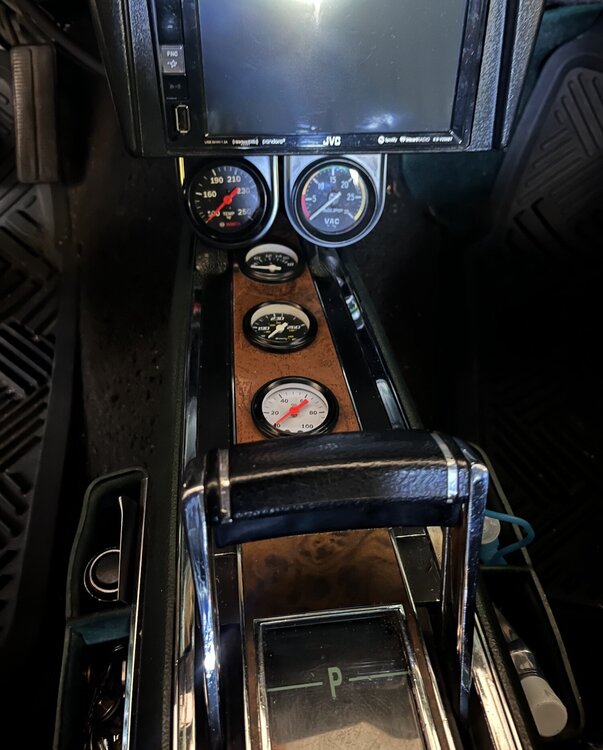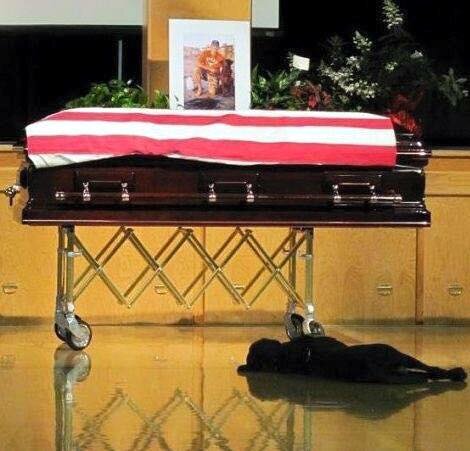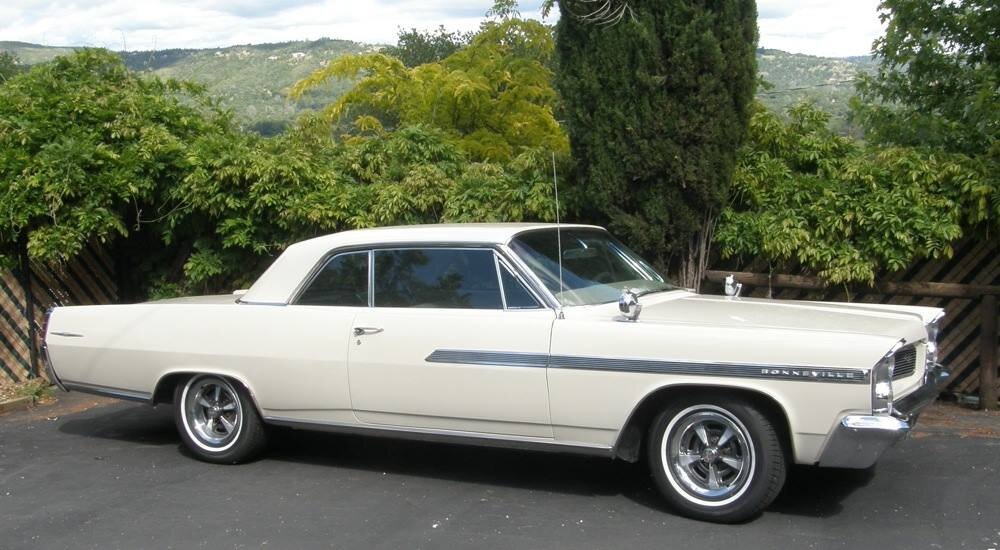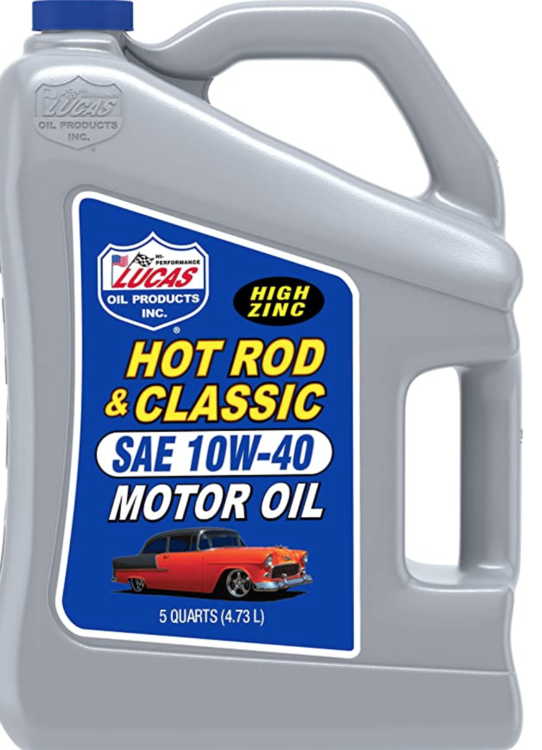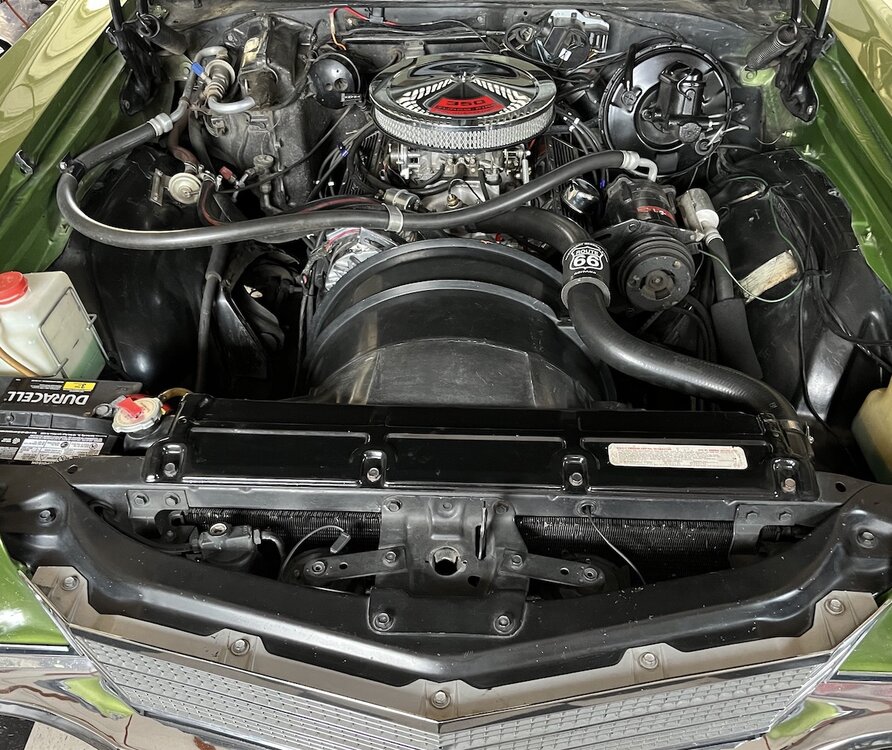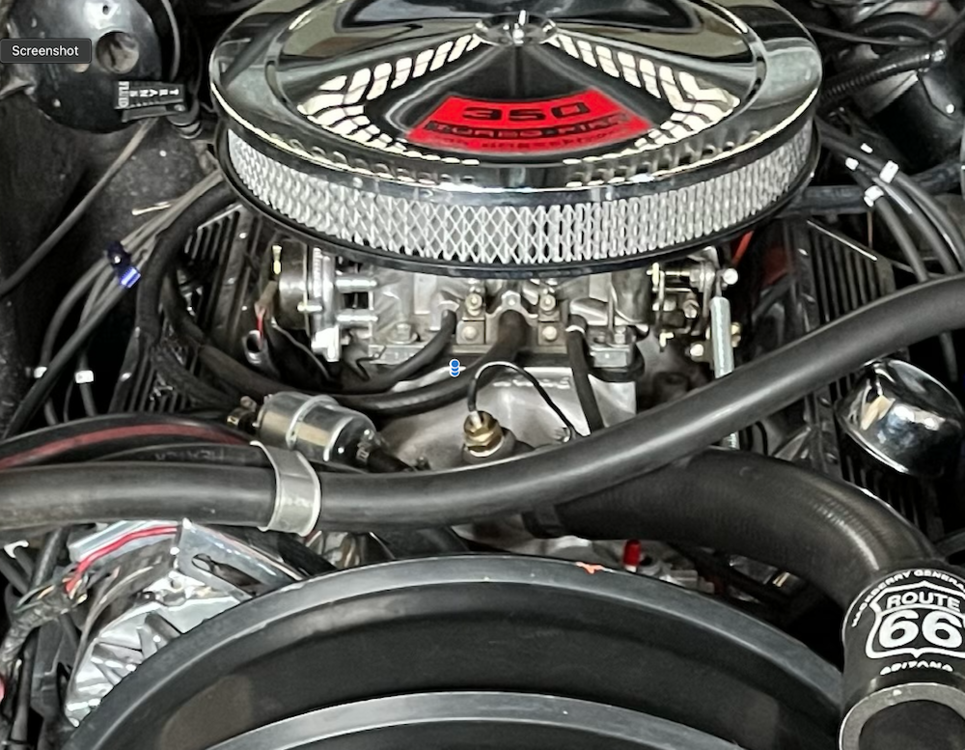

EVC
Banned-
Posts
677 -
Joined
-
Last visited
-
Days Won
18
Content Type
Profiles
Articles
Forums
Gallery
Events
Everything posted by EVC
-
-
Aaron, I really like the wheels.. The color of the car in the background area of the wheel would look nice too… Otherwise a darker color in the back ground would look great too. Back in the day, we used to get rattle cans of paint to match, so it was cheap and easy to make a mistake and redo. Ed
-
This is our original Monte.. My favorite wheels were from a 1969 442 olds. I painted the wheel to match the car…. The car and the wheels were a perfect visual match. If I could find another set, I'd paint the inserts to color match the car. We special ordered our first Monte while we were in Japan. The car was a 2barrel 350 ,A/C with bucket seats/console. We drove her about 175000 miles and sold her in about 1984. She ran perfectly and never failed us .. Lower photo was taken at Mayport Fla summer of 1970… upper photo was taken at our horse riding stable on Beale AFB Calif. Yes, The old Monte had a trailer hitch and was used to pull my daughters horses to local shows… The four kids and I built the horse stable in the background and have a lot of good memories there… The horse club was as much fun to the kids as my cars were to me. My other vehicles at that time at that time were a 1936 Chevy two door, a 1956 Crown Victoria , 1954 Mercury Monterey and a 1956 Merc Monterey... At that time it was all about wheels/hubcaps and cars of the fifties. A good paint job was about 600 bucks.
-
Excellent advise. Thank you Bryan… 7 to 8 neg castor degrees is impossible, especially if the car drives extremely well. Been reading about the rubber bushings and agree. We have and still drive this car all over the US… Going to Florida from Calif is done at the turn of the key and a few road chips along the way is normal for us. The tire wear was very slight on our last trip and minor toe adjustments corrected that. I stored the original motor in 1992 and used a nicely built 350 for about 80, 000 miles. Rebuilt and installed the original a year or so ago. I promised her I'd give her original heart before we part. Her original engine now has about 13,000 on the rebuild and purrs like a cougar in heat. She is getting close to 200, 000 on her old body and frame, but she can hold her own in any show. May not win, but who cares… She's an American road car and has always brought us home safely. She's an elegant lady and does what she was designed to do. Really looking forward to the upgrade of positive castor and possible steering box you recommended… The shocks have about 100,000 miles and will change that too… Ed C.. .
-
Thank you Bryan, My goal is to keep the stock arms and get as much positive castor as possible…. Anything north of 3 degrees The steering box is on my list as well. Somewhere I must have done something wrong…. My castor readings are in the negative 7 and 8 degree range, making it impossible to get into the positive range without an excessive amount of shims and therefore making it impossible to reach a good camber number. "Hence the idea of an offset shaft"…. The car drives very well. Numbers that far into the negative range would make the car almost impossible to drive. I plan to put her back on the alignment rack next week. I've had the car aligned many times at other shops. Those wild castor numbers never appeared before and were always in the green. The camber has also remained stable over the years and still is. Any sudden change in the castor would most likely have shown up in the camber relationship. My camber numbers are currently ,, .4 and .1 respectively… I called Scott at Globalwest yesterday and he agreed, castor numbers that far in the negative would manifest itself in terms of drivability meaning, in his words "almost impossible". It was interesting , but he actually asked me if my control arms could possibly be on the wrong side? I doubt this…… but ,,What If ??? LOL Apparently it's possible and he said he's seen it before and it would give those wild numbers. I'll remove the wheels next week and send him some photos.. I think the upper arms are stamped with a "D" for driver and "P" for passenger side. The upper bushings all appear well centered, but the upper passenger arm may have slipped back a little on the shaft…. .. not sure just yet… The rubber between the washers is gone and the rear washers are touching…. Hoping it's that simple and new upper bushings will do the job. I can then go about the business of getting as much positive castor as possible with the shims. I may try the offset shafts in the event there has been some frame sag. I also want to fine tune the camber for mountain driving and curvy roads. Open to suggestions…. Thoughts and ideas… Are there any negatives to using the offset shaft to achieve better Castor numbers ???? I know nothing about alignment,,, but for an 82 year old I'm learning very quickly… I really appreciate your info and help… Ed C
-
Thank you Cody. That makes a lot of sense to me… I hope the new upper bushings will help, otherwise I'll dig deeper and sort this thru. Your information has helped my understanding. I think the Monte's are stock with almost zero castor, so going into the negative side has me concerned. I'm going to recheck those numbers. The car drives great and the tires are wearing good, but all I get from most alignment shops is setting the toe and out the door I go with less money. Even the numbers from each shop vary widely, so I'm not certain of their accuracy. I've been to the guy, "who knows a guy, that is friends of a guy," and he was dumber than a rock. Without breaking the bank, I'm considering aftermarket or GM stock style upper arms to achieve the goals of positive caster.. Any recommendations will be appreciated. Ed C.
-
Has anyone had experience with an offset version of the front upper control arm shaft ? I'm trying to set my castor alignment to get into the positive range of 3 to 5 degrees without screwing up the Camber or changing the upper control arms. I've also seen versions of offset bushings, but don't care for the idea. Any help would be appreciated. I'm in the learning stage and have access to a complete alignment machine at our military hobby shop. One of the members suggested I change the upper control arms to achieve the increased positive castor. After doing some research I found that offset shafts are available. Looking closely at the upper bushings they appear to be perfectly centered, but after looking more closely it appears the passenger side bushing may have slipped backwards a bit. My first order of business will be changing the upper bushings and see if it makes a difference in the settings. I replaced the lower front bushings and springs about 8 years ago and they appear to be good. The bushings in the rear control arms are also about 8 years old and still good. The toe is within specs with a 3/16 overall,,, but the car seems to favor the right slightly. I'm thinking this may be the lack of positive castor or the upper right bushing. Thoughts and suggestions would be appreciated. Ed C.
-
I've been using Irish Spring soap bars for years. It smells good and bar under the seats and in the trunk keeps the mice out. I also use peppermint oil under the hood … Two or three Qtips soaked and zip tied to a wire will do the job. Looks good too. LOL Some cars are more prone than others. If you have wiring made with a soy base wrapping they will love your car. I understand that Honda had that problem and some after market wiring and kits did as well. My best insurance is my 5 cats that roam the barn yard. Ed C
-
-
Heating info…. The outside temps were 103 to 107. AC on full blast. Stock 7 blade fan and clutch, 160 thermostat. Radiator is 3 row stock and in great condition. HWY, 60 mph light on the pedal at about 1700 rpm , vs …. Heavy city driving stopped and idle at about 650 to 700rpm...
-
Dorman makes some good products as well.
-
Good luck Bryan,, sounds like you have the right parts… Thanks for the tip on the thermostat… Water Temps of 220 from the passenger side head are not uncommon in traffic, especially with the AC on and the air temps above 80… We live in the hill country and it amazes me to watch people speed up on the hills and race to the top… I'll never get it… !!! I can only imagine the exhaust temps and stress that puts on the engine and transmissions… But what do I know ? I've been behind the wheel of my Monte, Pontiacs and Cadillacs for well over 50 years and logged perhaps over a million miles of seat time. Driving cross country with the family, often with a trailer, makes one weary and alert in those long desert drives. 300 miles to the next gas station on the original route 66 was common…. Breaking down wasn't an option. Ed C..
-
The thermostat housing should logically be the accumulation point for the hottest water in the engine. If you're water is hotter in the cylinder head on the passenger side then you possibly have other issues. Every car I've owned had hotter water temps inside of the thermostat housing when driving. Which water pump are you using ? I doubt it, but the horror of reverse flow is always there. My 63 Bonneville, 60 Pontiac Ventura with 389s, and two Cadillacs, 472/500 and both Monte Carlos, 350s, all had hotter water temps in the thermostat housing. I'm no engineer, but it makes sense to me that's why the thermostat was placed there to begin with. The same thing applies to transmission temps. The oil in the pan should always be cooler than the converter. To get the average tranny temp always gauge from the pan. To get the scare the crap out you numbers gauge the temps as the fluid returns to the tranny cooler…. Same thing with your water,,, To get the scare the crap out of you numbers gauge the temps at the return point. Otherwise measure from the input average point and enjoy your car. All of my numbers are with actual water gauges installed in the engine, not with the little red dot. Using external measurements can be deceiving because of exhaust manifolds and other influences… Ed C
-
To add my thoughts: I run two water temps gauges.. One directly in the thermostat housing and the other in the stock position on the passenger side of my 350… There is usually a variance of 20 to 25 degrees between the two … Naturally the one in the housing is hotter… Typical readings are as follows: Using ambient air temp 90 to 95 degrees,,, as baseline. My Radiator is a 3row copper/brass stock type, stock fan and fan clutch. At idle,,,,In heavy traffic,,, w/AC on , the temps can read as much as 210/220 at the stock position and 230/240 at the upper housing when in heavy traffic. When rolling, the water temps will appropriately drop back to a comfortable 180 to 190 with AC ….Every car I've owned during the past 60 plus years of driving has run similar temps and like many other members here I am always concerned. The bottom line is, if it doesn't boil, then move on and try to treat the engine gently. I'm sure everyone here has their favorite setup, but I'm a big fan the 3 row radiator opposed to the 4 row or aluminum. (another discussion ) When the ambient temps go above 100 degrees I expect the numbers to increase and scare the crap out of me, but I've never lost and engine because of heat. Try driving a 63 Pontiac Bonneville 389 or and old Cadillac 472 in the Arizona desert. The temps will go off the charts. They seem to run better without mechanical gauges.. On cool days with average of 75 degrees she will run at about 160 on the open road (actually too low for me), but it really doesn't matter much whether you use a 160 , 180 or even a 195 degree thermostat, as long as it opens on time. Running a car too cool in the winter can be worse than running it at 220 on a hot day. Good oil with Zinc, proper coolant, hoses/belts and timing is everything… My fuel economy is best when the engine is 195 to 210. I use a vacumn gauge to drive and it really helps me from putting the foot down.. I picked this up back in the early 60s when Pontiac installed them in some their cars… EVC
-
It's all a matter of opinion … Unless you're racing or trying to impress the cops at the traffic light, the 770r4 with some milder gearing is always a great choice …. My 700r4 was built to handle the horsepower you're running, but I'm a little over stock at about 325hp with 273 gearing and do everything I need below 3600 rpm …. That's great for me , longevity, dependability , some seriously long road trips, and the wallet. Driving the Interstates at high rpm is tiring and not for me. The only change I'd consider for my car would be 308 gearing… Based on your comments, I'd think you're not into racing ,but would enjoy a street car most. That's a lot of horsepower and either transmission you choose will be fine if properly built and you have the correct stall converter. I am a big fan of the 273 and 308 gearing regardless of the transmission. Anything else you need will be handled with the horsepower and torque of your engine. EVC.
-
I'll give you $17,000.
-
-
Good…
-
I won't drive my classics without dual mirrors… I put them on my Bonneville 35 years ago … My Monte got her first pair about 50 years ago…
-
Looks great…. It should have been a factory option from the beginning…
-
I use Lucas in my older cars, but Valvoline with zinc or Driven are great oils as well… I'd use Zinc oil in my Yukon it it didn't have a catalytic convertor… Not a fan of Synthetic…. Personal preference, but I wouldn't use a zinc additive to a regular oil…
-
It used to keep my beer cool,,, so I figured it would keep my radiator cool too.. 🙂
-
BTW,,, The radiator hose shield was an option in 1970…
-
Steve, The small hose is plumbed directly to the drivers side port on my Edlebrock carb… as shown below…. I eliminated the PCV tee on my car because of the AC and valve covers… It was too crowded in that area, so I put my pcv on the passenger side valve cover.(see center port on the carb) …. If you look closely,, the canister center line is routed below my radiator hose and now circles back behind the carb directly to a tee put in the manifold….. You can see a red cap I placed in the hose as a port for the timing vacuum checks, and carb adjustment. The big line on the Canister goes to the fuel tank expansion / vapor line… This was the way I was advised to hook it up and it seems to work … Sometimes it's frustrating getting three different opinions from three mechanics….. Hope this helps… Ed.

